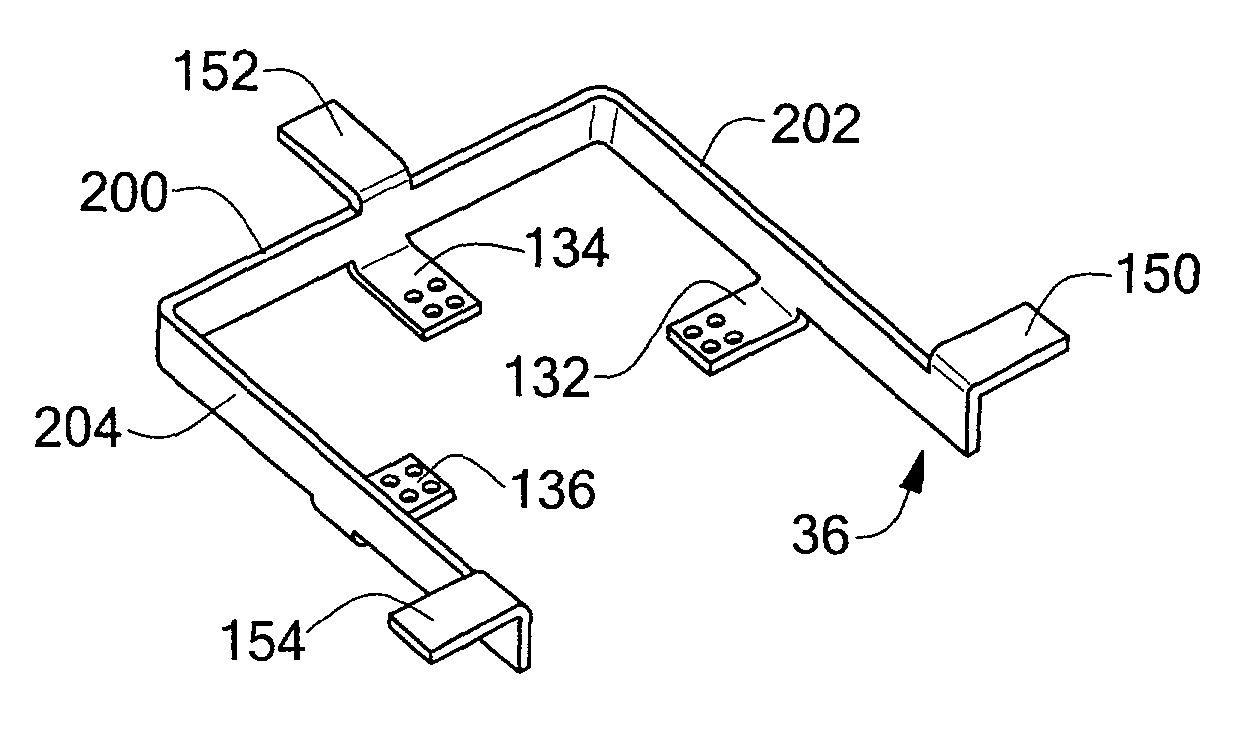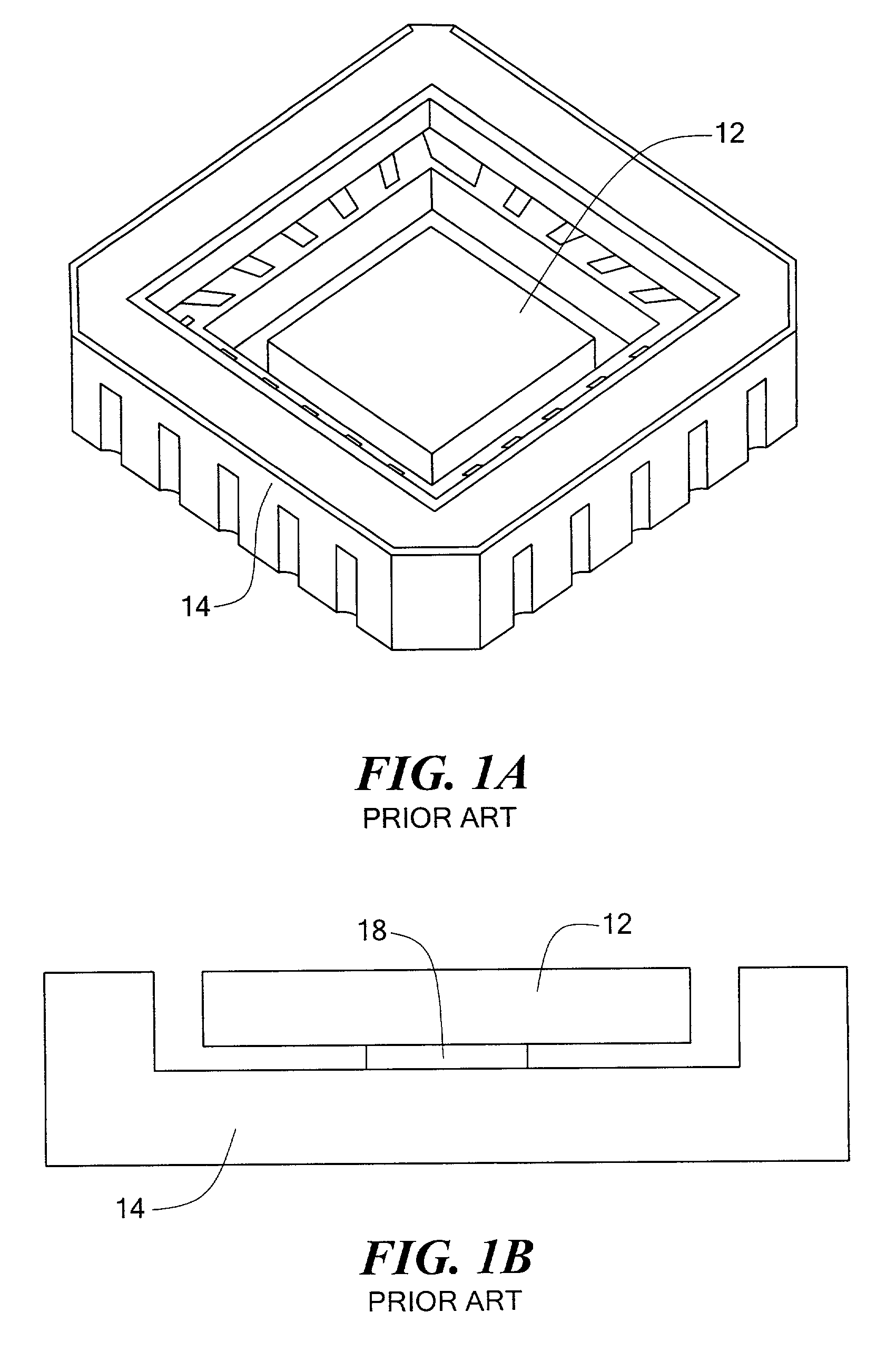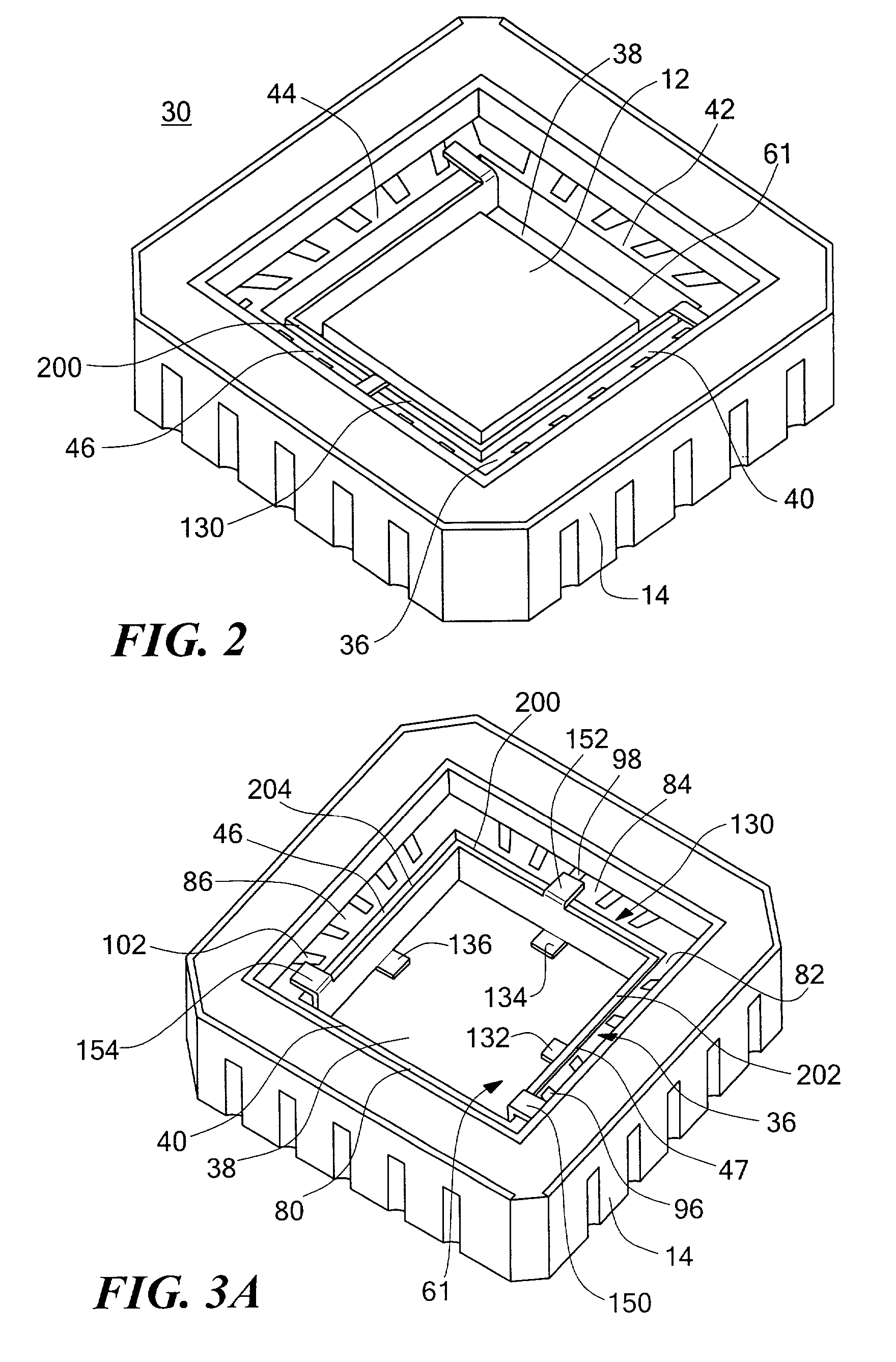Sensor isolation system
a technology of isolation system and sensor, which is applied in the direction of electrical apparatus construction details, machine supports, instruments, etc., can solve the problems of large thermal stress, adversely affecting the performance of the sensor, and the typical small size of the micro-electro-mechanical die, etc., to reduce the warping of the sensor, easy to fabricate, and inexpensive
- Summary
- Abstract
- Description
- Claims
- Application Information
AI Technical Summary
Benefits of technology
Problems solved by technology
Method used
Image
Examples
Embodiment Construction
[0046] As explained in the Background Section above, sensor 12, FIG. 1 is shown mounted directly to package 14 in accordance with the prior art. Sensor 12 maybe a micro-electro-mechanical (MEM) gyroscope / accelerometer or other type of sensor. In the prior art, sensor 12 is rigidly mounted to the floor or substrate of package 14 as shown. Hermetic package 14 is typically made of aluminum oxide. Another prior art technique, as also delineated in the Background Section above, employs small pad 18, FIG. 1B which is placed near the center of package 14 in an attempt to isolate sensor 12 from thermal and mechanical stresses and strains.
[0047] However, these prior art systems exhibit several distinct disadvantages. First, the thermal expansion of package 14, typically made of aluminum oxide, is significantly greater than the thermal expansion of sensor 12. Consequently, when sensor 12 is directly bonded to package 14, large thermal stresses develop which cause sensor 12 to warp which adver...
PUM
 Login to View More
Login to View More Abstract
Description
Claims
Application Information
 Login to View More
Login to View More - R&D
- Intellectual Property
- Life Sciences
- Materials
- Tech Scout
- Unparalleled Data Quality
- Higher Quality Content
- 60% Fewer Hallucinations
Browse by: Latest US Patents, China's latest patents, Technical Efficacy Thesaurus, Application Domain, Technology Topic, Popular Technical Reports.
© 2025 PatSnap. All rights reserved.Legal|Privacy policy|Modern Slavery Act Transparency Statement|Sitemap|About US| Contact US: help@patsnap.com



